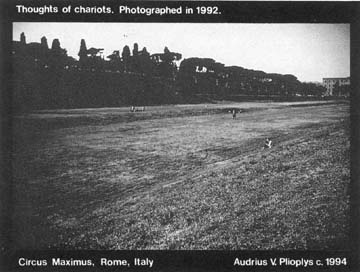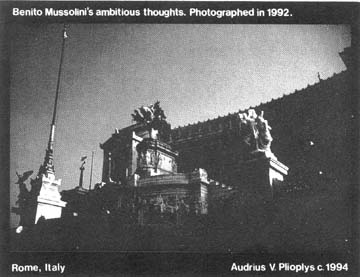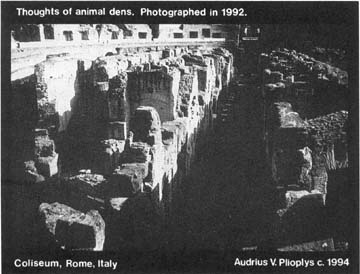Editor of this issue: Antanas Klimas
Copyright © 1997 LITUANUS Foundation, Inc.

|
LITUANUS
LITHUANIAN QUARTERLY JOURNAL OF ARTS AND SCIENCES
Volume 43, No. 2 - Summer 1997
Editor of this issue: Antanas Klimas ISSN 0024-5089
Copyright © 1997 LITUANUS Foundation, Inc. |

|
DR. AUDRIUS PLIOPLYS AND HIS CONCEPTUAL ART
ALGIMANTAS KEZYS
Audrius V. Plioplys is a child neurologist, neurobiologic researcher and accomplished artist In his art work he tries to incorporate all aspects of his professional career. His preoccupation is thinking and the thought process. For the past ten years his art work has concentrated in this area. The forms that he has used have included photography, electroencephalograms, indoor and outdoor installation pieces, works on paper and declaring his published clinical and neurobiologic research results as art.
He has had eight individual art exhibits in Washington, DC, Minneapolis, Montreal, Chicago and Vilnius. His most recent solo exhibit was at Chicago's Artemisia Gallery in February, 1996. The works illustrating this article are from this show's exhibit catalogue.
He has also participated in 48 juried group shows across North America. Several of these group exhibits should be noted. At the ARC Gallery in Chicago, in July, 1995, Mr. Richard Francis, the chief curator of the Museum of Contemporary Art in Chicago, selected 20 artists including Audrius Plioplys from over 300 submitting artists. At the Berkeley Art Center, in December, 1995, Ms. Sandra Phillips, chief curator of photography at the San Francisco Museum of Modern Art, selected 51 artists from over 700 submitting artists; out of the selected artists, a juror's award was granted to Audrius Plioplys for the exhibited work — in total only 14 juror's awards were granted. At the Viridian Gallery, New York City, an exhibit was curated by Ms. Lisa Phillips, curator, Whitney Museum of American Art, and selected the works of Audrius Plioplys for slide display. At the First Street Gallery, New York City, Mr. Tom Cugliani of the Marlborough Gallery, selected 35 artists, including Audrius Plioplys, from over 1,200 submitting artists, for exhibit.
The exhibits in which Audrius Plioplys has participated in have been supported financially by City Arts 3 Grant, Chicago Department of Cultural Affairs, United States Information Agency, United Airlines, Lufthansa Airlines, Paul and Gabriella Rosenbaum Foundation, Illinois Arts Council and the Contemporary Arts Council.
In the past year, Audrius Plioplys has had his work exhibited at the following universities: Bowling Green State University, Bowling Green, OH; Northern Virginia Community College, Annandale Campus; University of Arizona, Tucson, AZ; College of Visual Arts, St. Paul, MN; Shepherd State College, Shepherdstown, W.V.
Audrius Plioplys is a recipient of six research fellowships and ten major research grants. He has been an invited lecturer to Mexico, Sweden, Lithuania and across the United States. He was chairman of two research review committees of the National Institutes of Health, (committees on neuroimunology of autism and Alzheimer's Disease). He is a Fellow of the Royal College of Physicians and Surgeons of Canada, Fellow of the American Academy of Pediatrics, and a Certified Medical Director. He is the author of forty published neurology articles and thirty six neurology presentations. He is the Medical Director of four children's nursing homes for children with severe neurologic handicaps (Alden Village, Little Angels, Marklund and Philip Rock), the Director of Child Neurology, Humana-Michael Reese Health Plan, Chicago, and Director of the Chronic Fatigue Syndrome Research Center, Mercy Hospital, Chicago. He is an Assistant Professor in the Department of Neurology, University of Illinois.
"Dr. Plioplys is an exceptional individual. He is extremely bright, inquisitive, knowledgeable, very highly motivated and has developed the characteristics of an excellent clinician," says Dr. Burton Sandok, Professor and previously Chairman, Department of Neurology, Mayo Clinic.
Audrius Plioplys' professional medical experience was influential in discovering the themes for his artistic expression. While working at the Mayo Clinic, he created a series of encephalograms of his own thinking about various art subjects. The print-cuts were then signed and exhibited as his works of art. He also considered his articles on medical subjects published in magazines and journals as works of his art. The published copies were clipped from the publications, framed and exhibited. Plioplys has been rightly labeled as a conceptual artist. His esthetics consist mainly in elicited ideas and concepts, rather than in formal lines, colors, or drawings. The Artemisia gallery exhibition (1996) featured black / white and color photographs with brief statements about the author's intent for each photograph. The pictures are grouped under the titles: "Supremacy of Thought," "Submission of Thought," "Implementation of Thought," "Suspension of Thought." To the uninitiated viewer these photographs might give the impression of being simple snapshots taken by the author in his travels through historic sites in the United States and abroad: a field covered with tall grass, a religious ceremony in a country church, mountain scenes, landscapes. The viewer may overlook an essential element, namely, the accompanying inscription expressing the author's intent in taking the photograph. The caption not only provides information about the content of the image, but it also acts as a springboard to generate thought and meditation. The tall grass in Minnesota has this caption: "Thoughts of a mass execution: 50 hanged. Photographed in 1980. Rural Minnesota." The impact of the added text, however, is not always as strong, and sometimes belabors the obvious: "Thoughts of serenity and peace" are inscribed over an image of a Roman park in Rome; or "Thoughts of Japanese tranquility" are written to describe the beautiful scenery of Gem Lake, Colorado. But this is Plioplys' way. He attempts to sublimate the ordinary, seemingly post-card type color photographs or family album pictures, and to elevate them into something other than what they appear to be. They are not just documents of events and places, but symbols of some higher aspects of life. In the author's juxtaposition of pictorial and visual elements the viewer finds elements of surprise, contradiction, tragedy, and peace. These elements, however, may not be there if the picture is separated from its verbal description. In Plioplys' works, the main esthetic element seems to be the conceptual declaration, rather than the graphic image. And that benefits a conceptual artist just right. As Plioplys puts it: "In the beginning there was thought."
IMPLEMENTATION OF THOUGHT
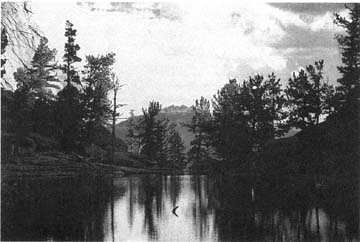
Thoughts of Japanese tranquility.
Gem Lake, Colorado, 1996

Thoughts of
valley peacefulness.
Forest Canyon, Colorado, 1996

Thoughts of bygone settlers: away from here, the ghosts are coming!
Lulu City, Colorado, 1996
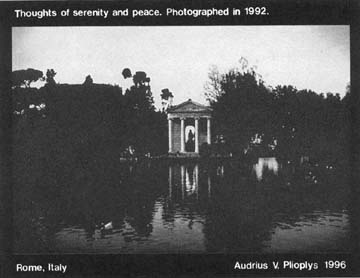
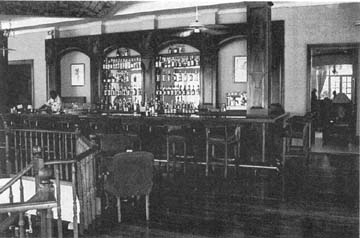
Thoughts of Havana indulgence.
Ocho Rios, Jamaica, 1995
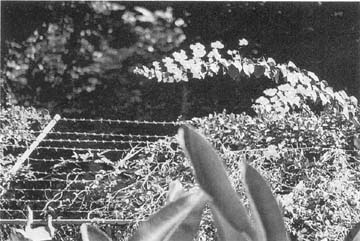
Thoughts of protection from the natives in paradise.
Ocho Rios, Jamaica,1995
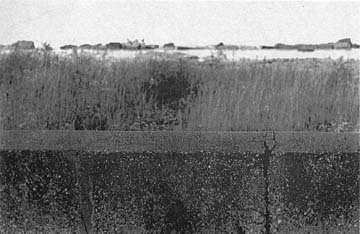
Thoughts of arming Europe: site of 1893 Krupp's gun pavilion. Photographed in 1979.
LaRabida Children's Hospital, Chicago, Illinois, 1995
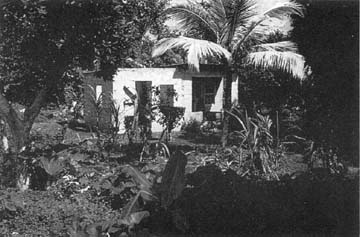
Thoughts of a tropical paradise.
Ocho Rios, Jamaica, 1995
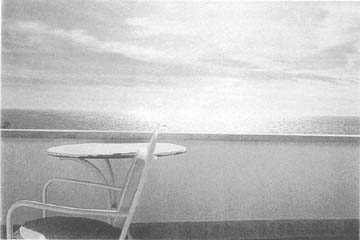
Chair for thoughts.
Sagres, Portugal, c. 1994
